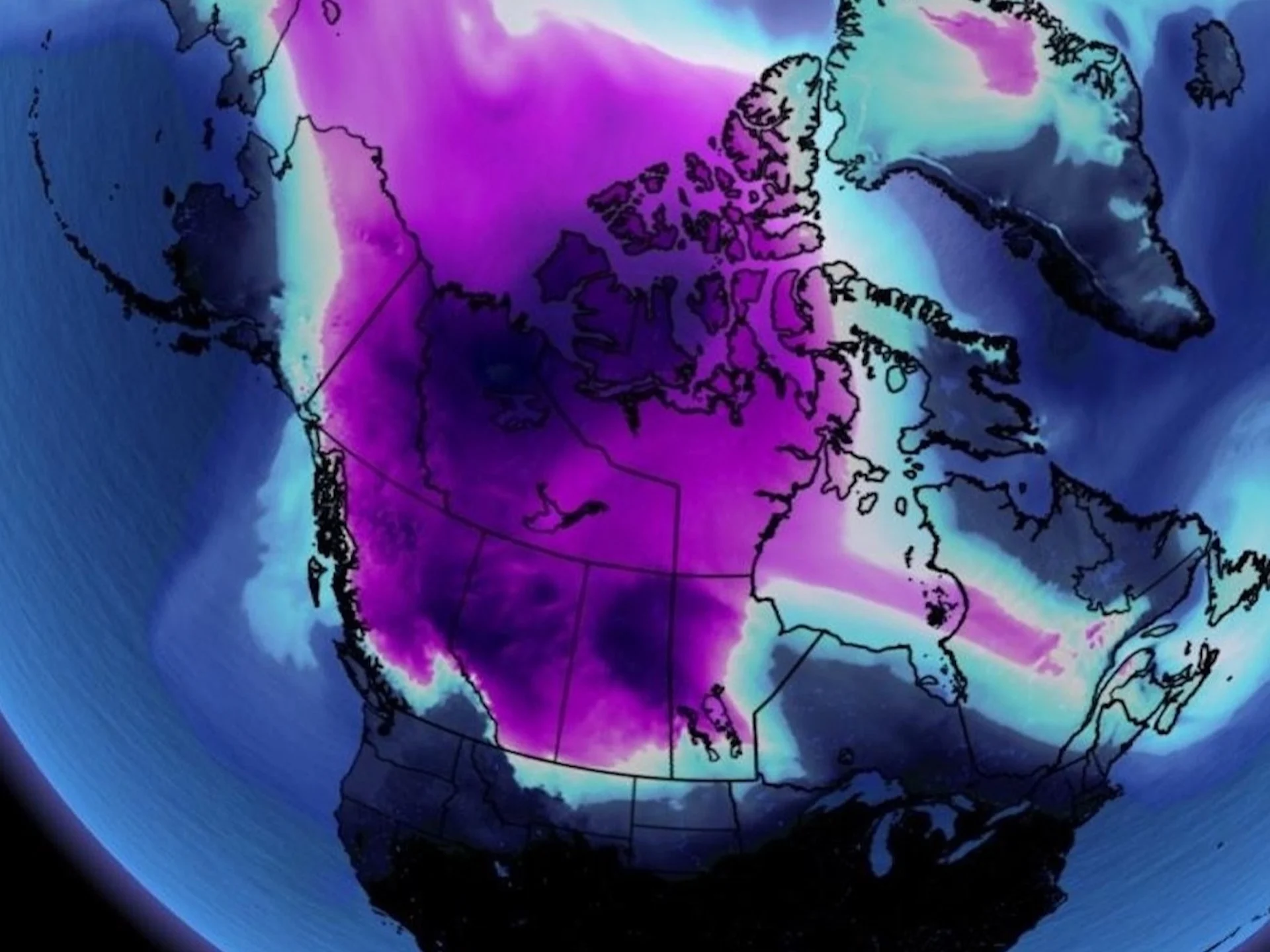
Severe cold snap defies El Niño, brings extreme chill, snow to the Prairies
A drastic change is coming in Western Canada, with significantly colder air moving in from the Arctic this week. Temperatures will plummet into the -20s, and even -30s for some areas, so make sure to stay warm and limit any outdoor exposure
Get ready for a drastic pattern change on the Prairies!
A blast of wintry weather is ahead, bringing with it some of the coldest air of the season. So, it's time to bundle up and prepare for the chill.
Snowfall Tuesday into Wednesday
First, let's talk about the snow. It's going to start making its way into parts of Alberta early Tuesday morning, gradually moving east throughout the day. By late morning or early afternoon, southern areas of Saskatchewan should also expect to see some snow. If you live in Edmonton or Saskatoon, be sure to give yourself some extra time for the evening commute, as we might experience some snow buildup in the mid-afternoon to evening hours. Less impacts are likely in Calgary, where no more than 5 cm of snowfall is forecast.
As we move into Wednesday, the snow will reach Manitoba during the early hours of the morning and continue throughout the day in certain areas of the province. The heaviest amounts appear to be in the Dauphin area, where as much as 25 cm will be possible. Folks in Brandon could see 15-20 cm, while 5-10 cm is forecast for Winnipeg.

SEE ALSO: What POP really means in a weather forecast
Now, here's a heads up for everyone in these three provinces. Once the system clears out on Thursday morning, temperatures are going to drop dramatically, reaching dangerously cold levels through the weekend. It's important to exercise caution and take necessary precautions to stay safe. More details on the cold below.
Extreme Cold
To think, later this week, daytime highs on the Prairies will struggle to go above -30°C –– an extremely rare feat during an El Niño winter.
Things are going to change in a hurry across the Prairies as a flip in the pattern opens the gates for frigid air to spill out of the heart of the Arctic Circle.
MUST SEE: What is the polar vortex? How it’s responsible for dangerous cold
After Edmonton, Alta., finally reached a temperature of -15°C in the early hours of Jan. 7, the latest on record, that will soon be very warm by comparison to what's coming.
Temperatures plummeting well into the -20s are what's on the menu for the region this week.
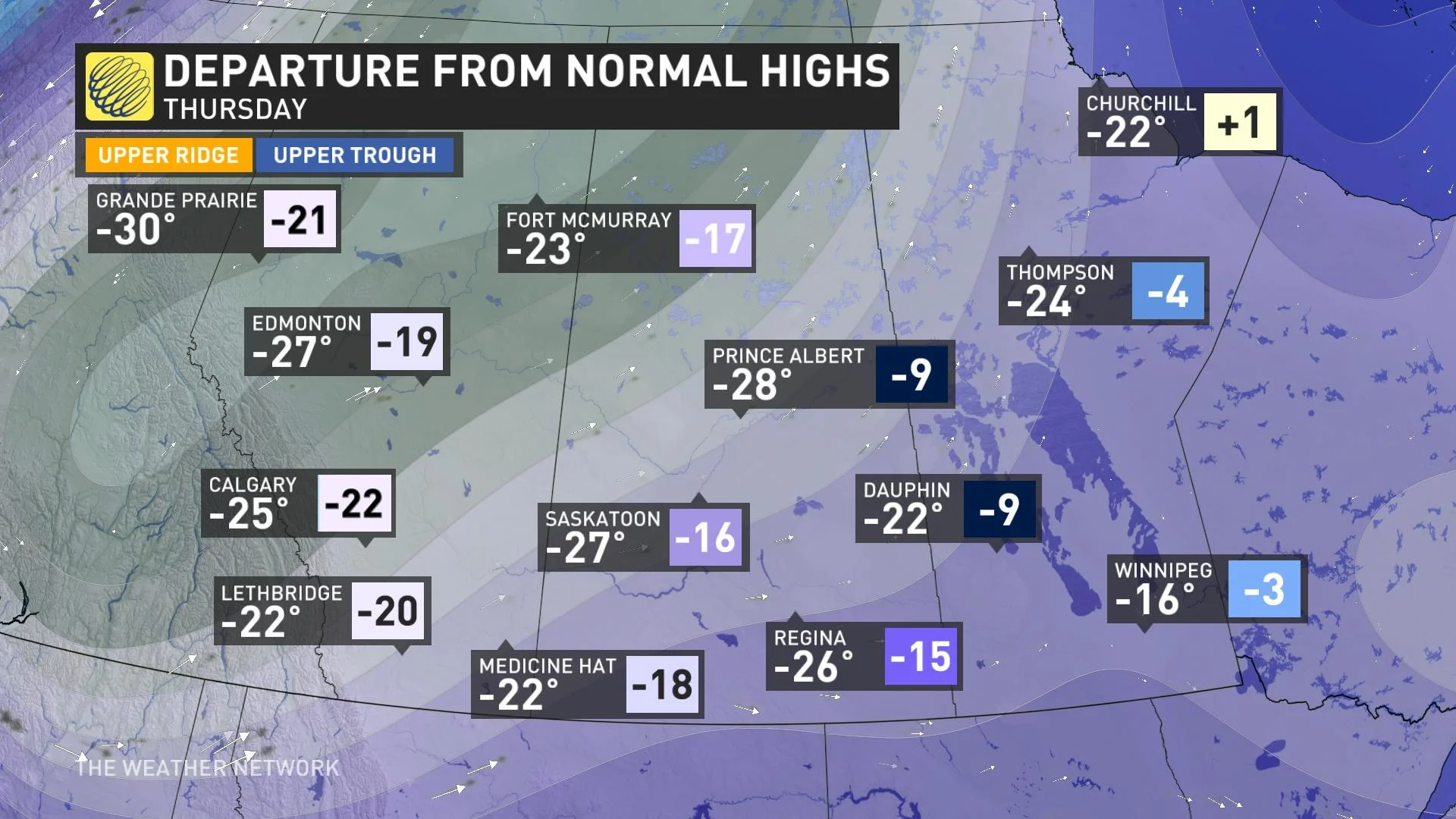
The polar vortex will drive this rapid change in wintry fortunes across the western half of Canada. This large-scale circulation high above the Arctic acts like a fence, keeping the bitterest chill confined to the higher latitudes. When the polar vortex weakens and grows unstable, those frigid temperatures can spill south.
After the mild December where the coldest air in the Northern Hemisphere stalled over Siberia, the tables have turned. Now, the coldest temperatures relative to normal on the entire globe will be across British Columbia and the western Prairies.
DON'T MISS: Winter to finally show up in January as El Niño bested by polar vortex
A big temperature contrast is forecast on Tuesday as a low-pressure system tracks east. There will be a 30-degree temperature range across Alberta, as cold air begins to ooze farther south.
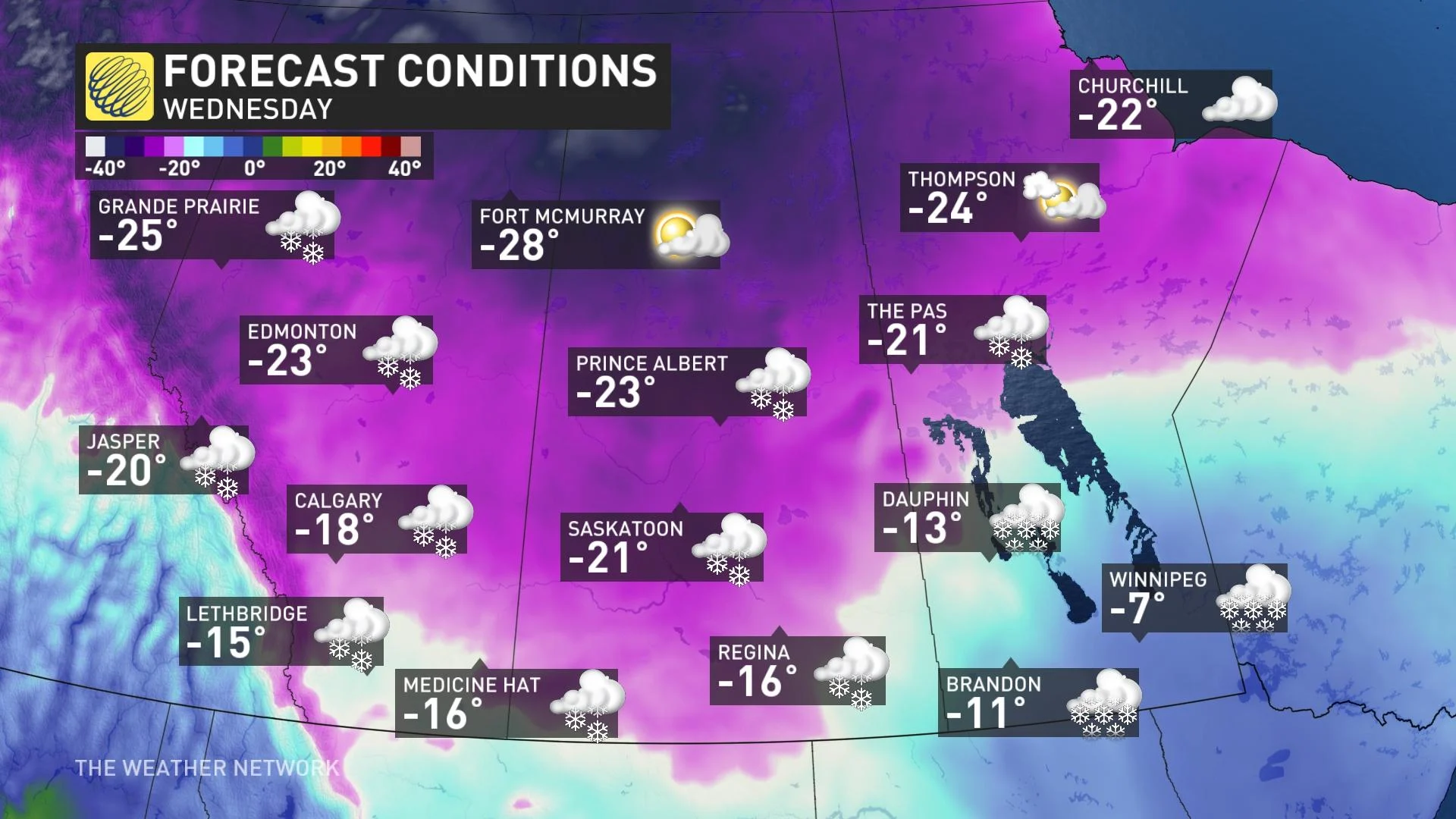
By Wednesday, the Arctic floodgates will have opened across the western Prairies, with temperatures diving well below seasonal.
Temperatures continue to tumble to dangerously cold values on Thursday, here’s the temperature anomalies forecast to be more than 20 degrees below seasonal in Alberta.
MUST SEE: The chilling truth behind wind chill and its impact on our well-being
But it gets worse, somehow. It gets even colder on Friday as models are suggesting highs will struggle to get much above -30°C for daytime highs, a rarity in the 21st century. Edmonton airport has recorded just five days in the 21st century below -30°C as daytime highs –– the last time on Dec. 21, 2022.
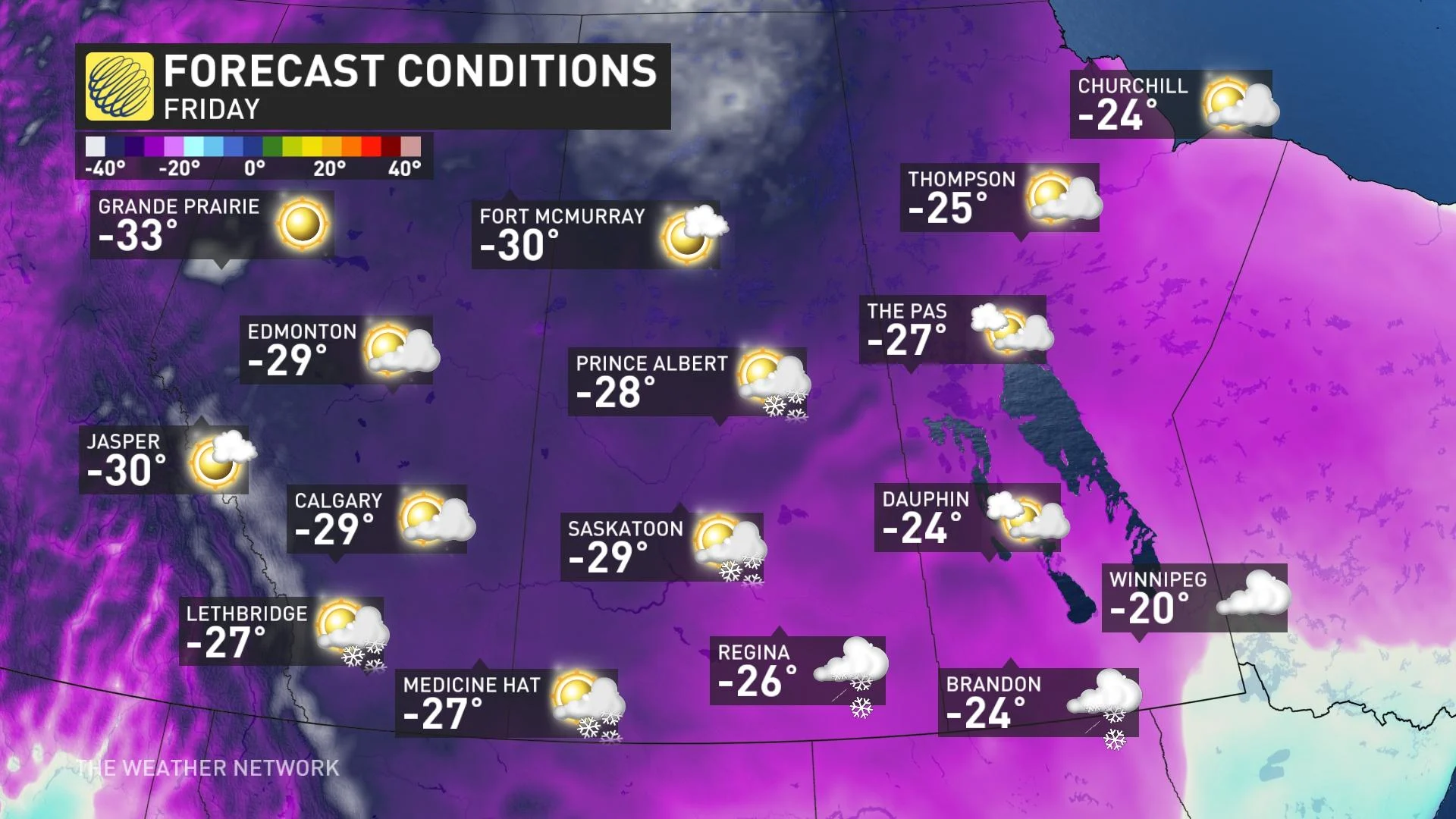
For Calgary, it’s even more rare. Just once since the year 2000 has it had a daytime high of -30°C, recorded on Jan. 27, 2004. The 20th century had 56 instances of a daytime high at or below -30°C, for reference.
Be Aware of Cold-related Emergencies
When a person is exposed to cold temperatures it may result in a decrease in body temperature, which is called a cold-related emergency.
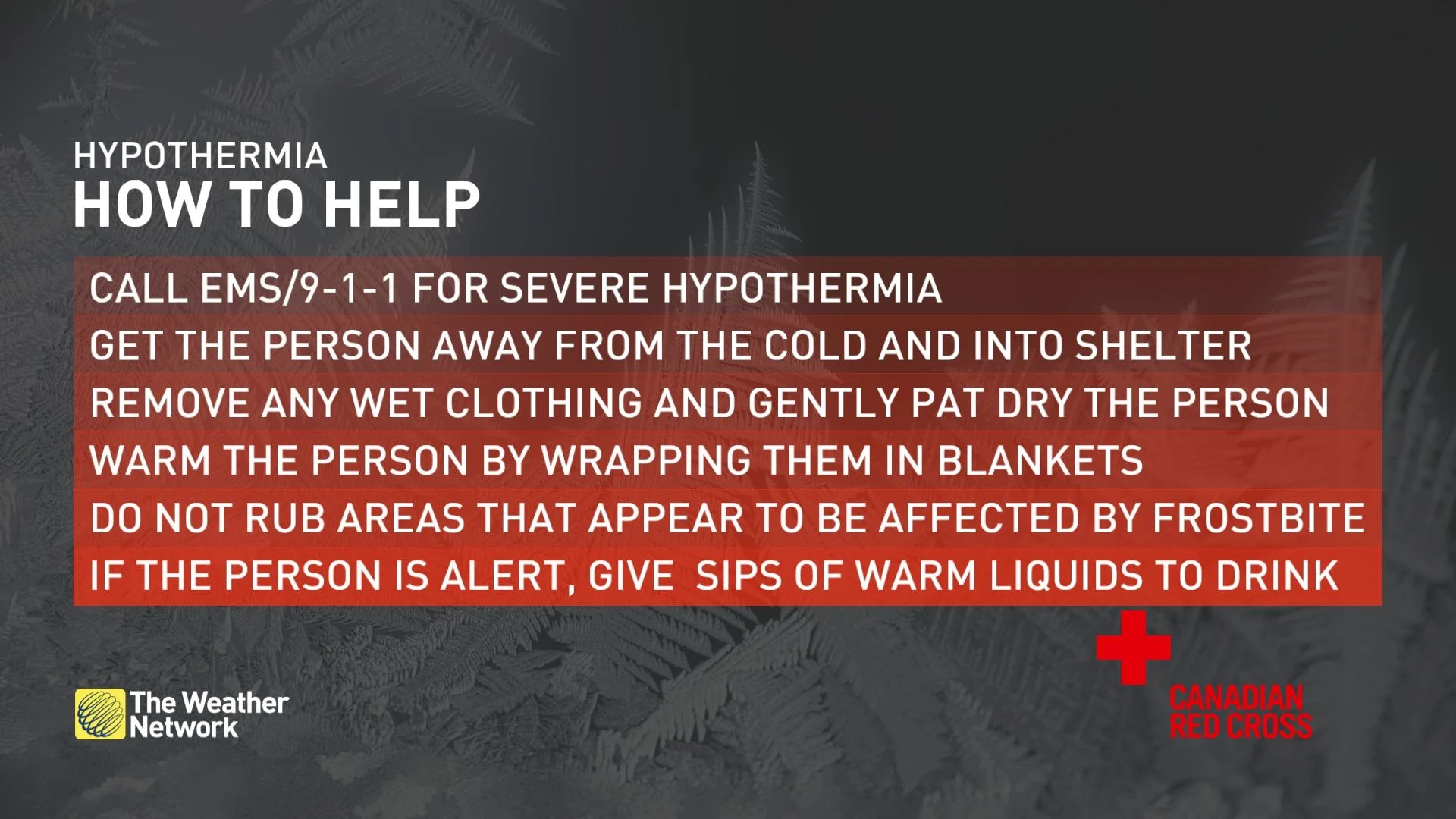
It is important for everyone enjoying the outdoors to know how to recognize when someone has been exposed to cold for too long, prevent cold-related emergencies, and be able to provide help when needed.
Prevention:
Cover your head and trunk by wearing a hat and layers of tightly woven fabrics such as wool or synthetics.
Cover up exposed areas such as your fingers, cheeks, ears, and nose.
If your clothes get wet when you are in the cold, change into dry clothes as soon as possible.
Drink plenty of warm fluids to help your body stay warm and hydrated, avoid caffeine and alcohol.
Eat high calorie food and drinks regularly as the body converts food to energy which heats the body.
Dress in layers so that you can adjust to changes as you heat up or cool off.
Bring additional warm clothing when going out for extended periods or in case of emergency.
Don’t wear tight fitting clothing or footwear that may impair circulation.
Seek shelter from the wind if you are getting cold, even if it is only behind a tree, hill, embankment, or other landscape feature.
You can find more information on how to recognize when someone is suffering from a cold-related emergency, here.
WATCH: Know the signs of frostbite and hypothermia this winter
Stay with The Weather Network for the latest on conditions across the Prairies.
